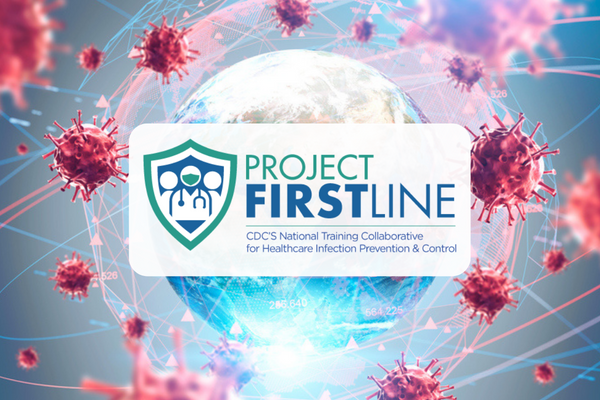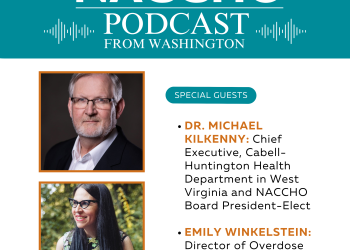NACCHO is proud to be a partner of CDC’s Project Firstline, a comprehensive infection control training and education program designed to help prevent the spread of infectious diseases in U.S. healthcare settings. Project Firstline is committed to preparing the public health workforce and frontline healthcare workers to protect themselves, their patients, and their communities from healthcare infection risks.
This is the first of a two-part blog series on infection prevention and control in which we will present two fictional, but possible, case studies for you to consider and imagine how you might respond. Helpful resources from the CDC’s Project Firstline are described throughout the scenarios.

Through these case studies, we will explore differences in measles protection associated with age, measles transmission pathways, and resources to support follow-up education with facility staff.
The Situation:
You are the Director of Disease Prevention and Control at your county health department. It is the Friday before a holiday weekend, and you just received a call from the Director of Nursing at a long-term care facility for your guidance on an emerging situation. A facility resident’s daughter brought her family to visit two days ago. The resident’s daughter called to inform the facility that her youngest child – the grandchild of the resident - was diagnosed with measles today. The mother observed the measles rash the morning before and had just received positive test results from the practitioner they visited yesterday.
The facility had screened visitors for COVID vaccination prior to their visit, in keeping with current safety requirements. The residents’ grandchild had been vaccinated for COVID. They were also scheduled to receive their first measles mumps rubella (MMR) vaccine, but it was delayed during a lockdown period associated with the COVID-19 pandemic, so administration and their vaccine appointment was not rescheduled. The resident has not been vaccinated but was exposed to measles as a child.

What are your first steps to support this facility?
- Report the outbreak to the state health department;
- The definition of exposure to measles:
- Shared air space with an infectious measles at the same time;
- Shared air space vacated by an infectious measles patient within the last 2 hours.
- Begin contact tracing:
- Determine where the visitors went in the facility (Confirm the date, timeframe & location of the grandchild’s visit- review facility’s visitor log, interview staff, etc.);
- Develop a line list of facility staff, residents and visitors present during the timeframe of the visit and for 2 hours afterward. Provide facility with a line list template;
- Identify anyone who might have been in contact with the visitors;
- Identify at-risk residents and staff who were in the areas the visitors were in, during or up to two hours after the visitors left the area;
- Verify immunity/vaccination status of any potentially exposed individuals, including both residents and staff.
- Provide web resources that outline steps to be taken;
- Determine what IPC training and education might be helpful to the staff at the facility; and
- Depending on SHD/LHD roles, contact parent to determine other potential social contacts during child’s infectious period and seek permission to use child’s name when discussing exposure. Provide isolation guidance, web/print resources.

You want to follow up to provide education to the facility staff so they can improve their infection prevention and control (IPC) practices. What IPC topics would you review with the facility? Find more details about the common pathways of germ spread -- including people -- on the CDC Project Firstline webpage.
Measles Vulnerability
Vulnerability to measles infection depends on individual age and vaccine status.
Older adults born before 1957 are presumed to have developed immunity because measles was a common childhood illness before this time. Many individuals born in 1963 or later received a vaccine as part of the national measles vaccination program in the U.S. Although the facility in this case study primarily services clients born before 1957, some individuals may be at increased risk:
- Clients or staff born between 1958 and 1963 who did not have measles or receive a vaccination;
- Individuals who received an inactivated measles vaccine between 1963 and 1967 and have not revaccinated with the live vaccine (inactivated vaccines used between 1963 and 1967 were ineffective);
- Younger individuals who do not have measles or receive a measles vaccine; and
- Individuals working in a healthcare setting who have only received one of the two recommended MMR vaccine doses for full protection.



